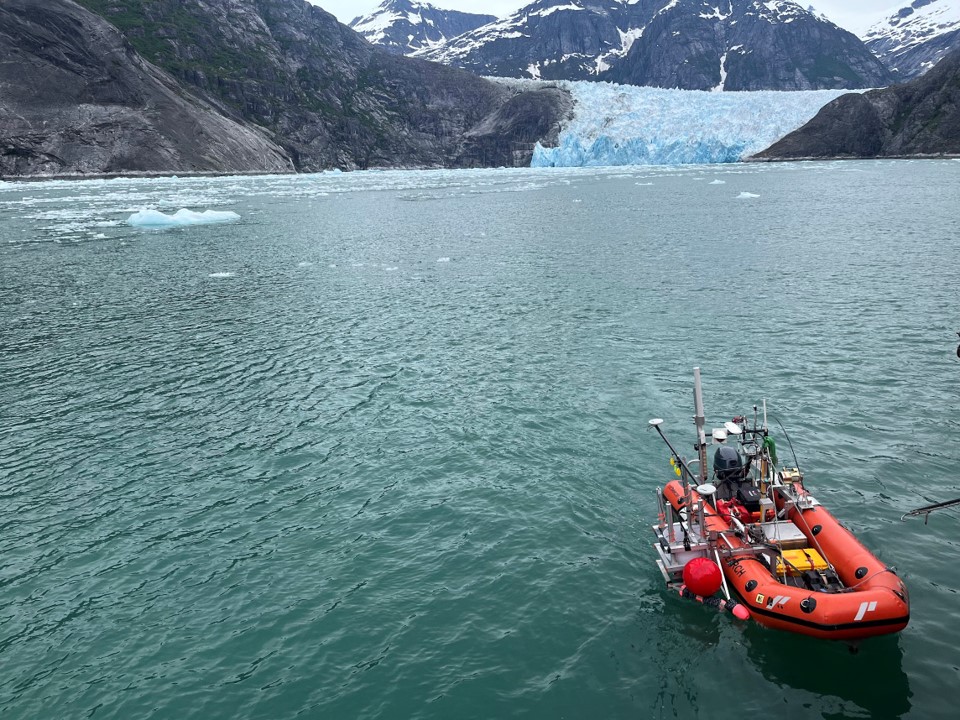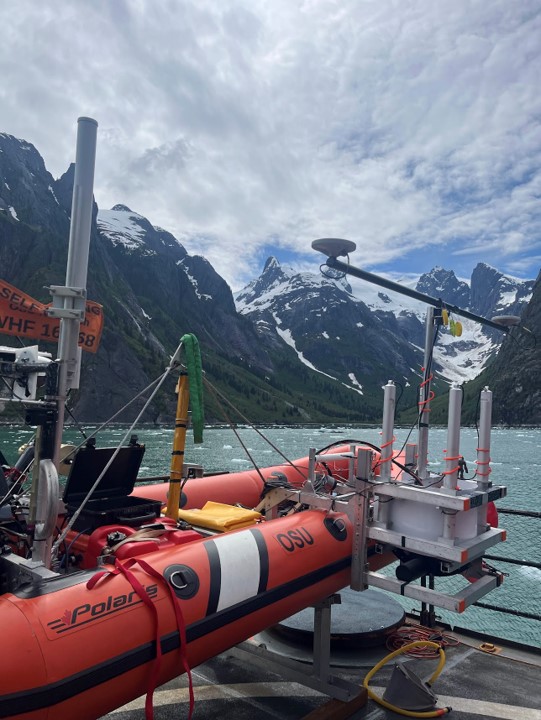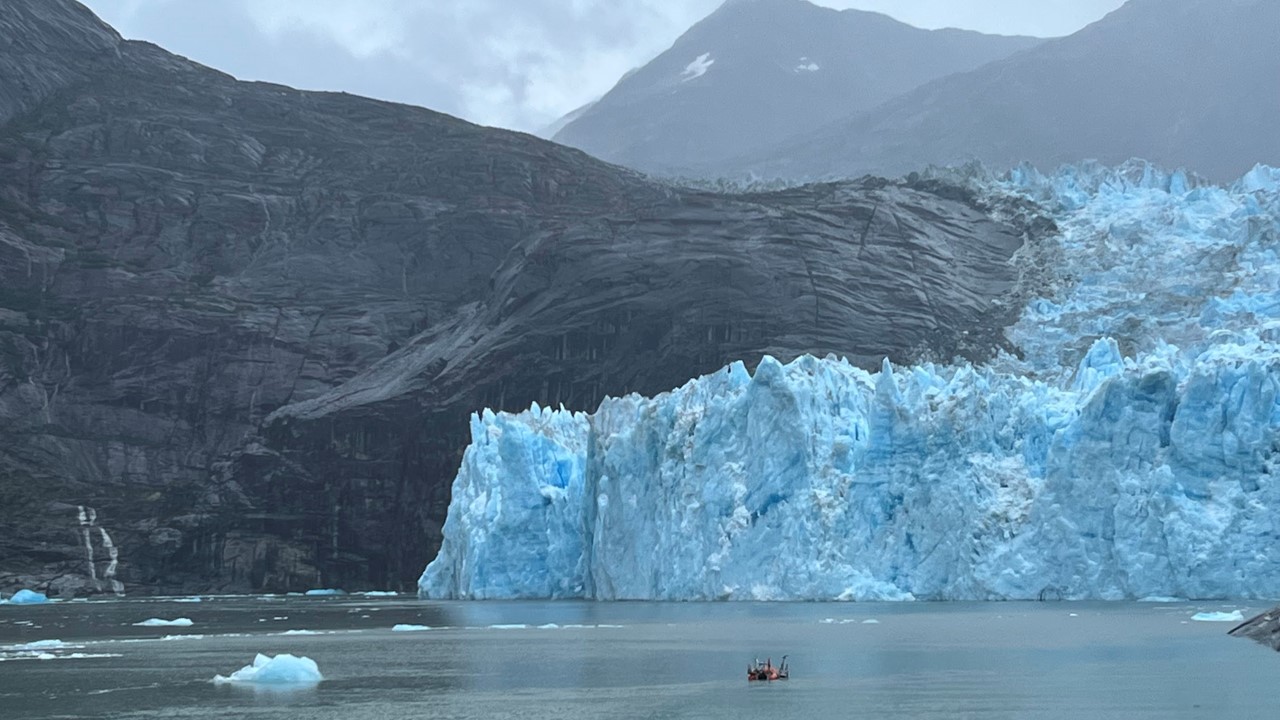
Researchers at Oregon State University (OSU) are making critical discoveries around glacial melt that will inform sea level rise projections and coastal community planning in the Pacific Northwest. This is just one project that is using an autonomous multibeam sonar system partially supported by a Murdock Trust grant in 2022.
Understanding Ice Formation with Autonomous Multibeam Technology

This summer, Dr. Meagan Wengrove, Associate Professor of Engineering, and Dr. Jonathan Nash, Professor of Oceanography, made the journey from OSU to Xietl Sít’ Glacier to make autonomous measurements at the face of this tidewater glacier. Using a robotic boat which Dr. Nash and his team had custom-built for a previous project, they operated this system from a safe distance while multiple instruments on the boat, including the multibeam, collected data. The multibeam uses acoustics to send pulses of sound into the water to measure distance from the glacier which, when combined with data from the other sensors on the boat measuring velocity, salinity, and temperature, informs researchers of the shape of the ice.
This type of data collection is critical for understanding glaciers and icebergs because, as Dr. Wengrove and Dr. Nash explain, nobody has been able to safely get this close to the glaciers before. The murkiness of the water near the ice surface makes underwater photos unhelpful, so a more sophisticated system is needed to get a full picture of what lies under the water’s surface.
“There has been mapping of glaciers in the past, but from pretty far away,” says Dr. Wengrove. “You miss things when you don’t have the same ability to get close and get the detail of the surface.”
Important early findings from this research are showing that rather than a flat plane of ice as previous predictions had assumed, the ice’s surface area is rough. This means there is more ice to melt than what models had previously predicted, and could be a factor in why ice melt models are off by a factor of 10:100. Knowing more about this surface area can improve projections of glacial melt, which will inform sea level rise projections and community planning for Pacific Northwest coastal towns.
Charting Coastal Waters: Other Autonomous Multibeam Projects
The glacial melt research is just one project using the multibeam system. This instrument has been put to use in at least eight other projects to date, helping characterize environmental conditions for a wave energy test site off the Oregon Coast, mapping Rogue Reef for rock fish habitat, mapping shallow methane seeps on the Oregon continental shelf, connecting satellite-derived bathymetry to coral reef health, improving predictions of sneaker waves that can be deadly for beachgoers, and more.
Dr. Nash predicts that the ripple effects of each of these projects will continue for years. “We thought it was important, but we didn’t really understand quite how important it was going to be, having the piece of equipment here, adapting it exactly the way we wanted it. I am sure there are three or four more projects that are going to spin off this particular ocean ice project.”
In addition to building capacity for new and critical research, having this system in-house supports OSU’s efforts toward two of its strategic research pillars: climate change and robotics.

“OSU is very interested in projects that are trying to solve things that are basically intractable,” said Dr. Anthony Koppers, Associate Vice President for Research Advancement and Strategy in OSU’s Research Office. “Working in extreme environments, like at the edge of glaciers and icebergs, is inherently dangerous and impossible to do with unmanned boats. But it’s a great need, because we all know that climate change is happening rapidly and most of the action is in the [North and South] poles where it’s very hard to work.”
The Murdock Trust is grateful for the ways this extraordinary research will benefit Pacific Northwest communities in direct ways and advance our shared pool of scientific knowledge globally. Thank you, OSU, for using science to serve the common good, and letting us partner with you in it.







